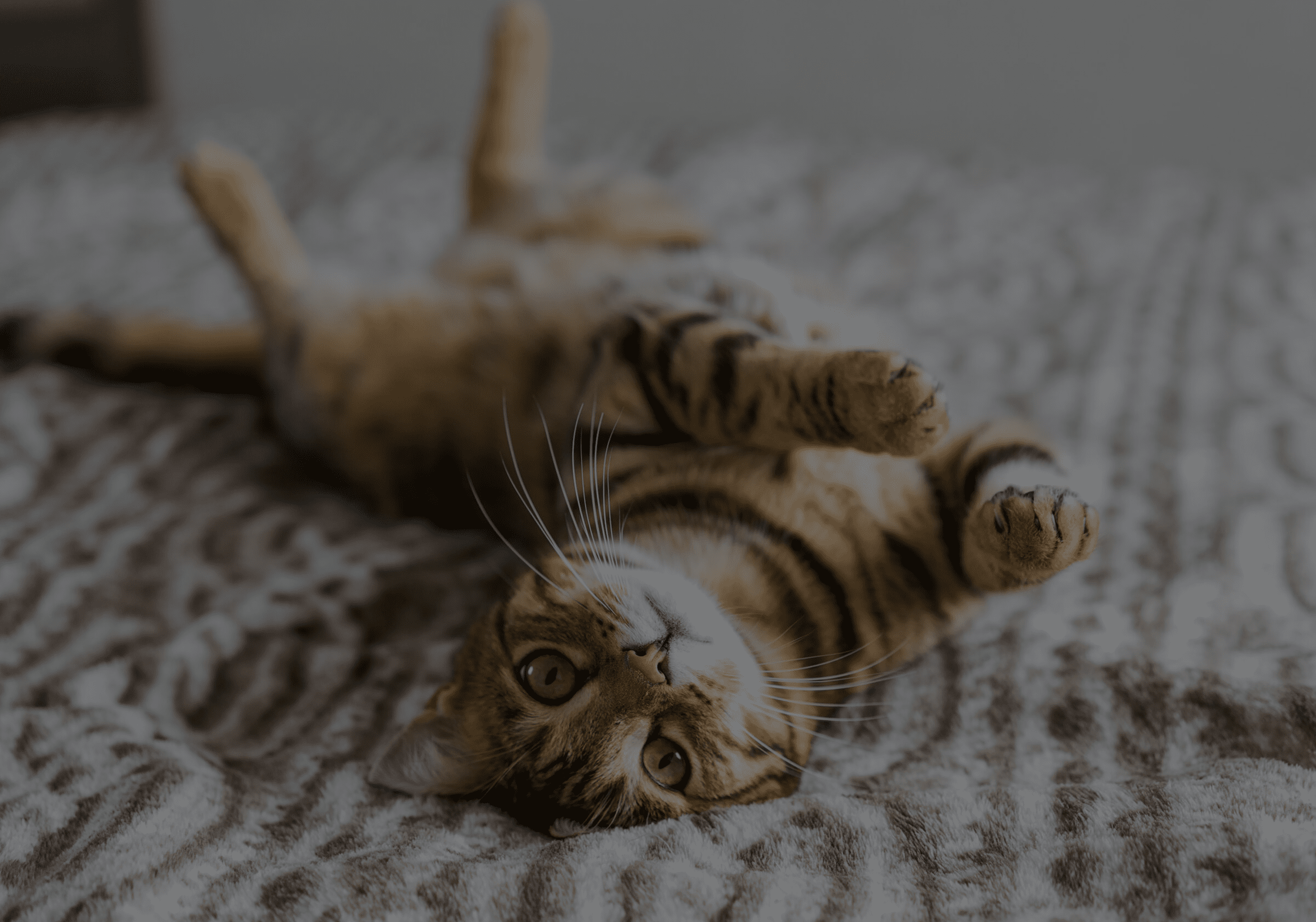Cats are famously low-maintenance when it comes to grooming, but their claws tell a different story. If you’ve noticed that your cat’s nails are splitting or peeling, it’s natural to wonder whether something is wrong—or if it’s just part of the normal wear and tear. The answer? It can be both.
Nail splitting in cats may seem minor, but it can sometimes point to underlying issues that need attention. Left unmonitored, split claws can snag, break, or become painful, leading to infections or changes in how your cat walks. At Metrovet Veterinary Clinic in Boston, we’ve seen how something as small as a cracked nail can escalate if it’s not addressed early, especially in senior cats or those with underlying health concerns.

Understanding the Anatomy of a Cat’s Claw
To understand nail splitting, it helps to know how a cat’s claw is structured. Unlike human fingernails, feline claws are made of multiple layers of keratin—each forming a protective sheath. These layers grow outward in a curved shape, allowing cats to grip, scratch, and climb. Over time, the outer sheath becomes dull and is naturally shed to make way for a sharper, newer claw beneath.
That shedding process is normal, and the nail may appear to be split or peeling when the old layer detaches. Often, this happens while scratching on posts or during grooming. However, when the splitting appears excessive, uneven, or is accompanied by bleeding, discomfort, or changes in behavior, it deserves closer attention.
What’s Normal and What Isn’t
A small amount of nail splitting is expected as part of the natural claw renewal process. Most cats will manage this on their own through regular scratching. You might notice paper-thin fragments of nail near the scratching post or even while clipping claws—those are likely the old sheaths being cast off.
However, you should be cautious if:
- The nails look frayed or shredded consistently
- Your cat resists walking, jumps less, or limps
- You notice redness, swelling, or discharge around the nail beds
- The claws are breaking near the base instead of the tip
- Your cat shows signs of pain when the paw is touched
These may be indicators of trauma, nutritional deficiencies, infection, or chronic conditions like arthritis or autoimmune disease.
Common Causes of Nail Splitting in Cats
Normal Shedding of Nail Sheaths
As mentioned, one of the most common causes of what appears to be “splitting” is the natural shedding of the claw sheath. This is generally harmless and expected. You may not need to intervene unless the claws are not being shed properly or your cat is having trouble retracting them.
Age and Nail Health
Older cats often experience thicker, more brittle claws that don’t shed as easily. Their nails may grow longer and curve back toward the paw pad, increasing the risk of splitting or embedding. Reduced mobility in senior cats also means less time scratching, which can affect nail turnover.
Nutritional Deficiencies
Just like in humans, a cat’s nail health is closely tied to their diet. Deficiencies in biotin, zinc, amino acids, and omega-3 fatty acids can lead to dry, brittle nails that are more prone to cracking. Cats on low-protein or unbalanced homemade diets may be especially vulnerable.
Overgrown Claws
When claws are allowed to grow too long, they can start to curl, twist, and weaken under pressure. Long nails are also more likely to get caught in fabric or carpet, causing sudden tears and splits. Regular trimming is essential to prevent this.
Trauma or Injury
Accidental injury is another common culprit. A caught claw, especially in energetic kittens or cats who climb, can tear suddenly and result in a painful split. Outdoor cats are also more exposed to this risk due to rough terrain or confrontations with other animals.
Fungal or Bacterial Infections
Though not as common as in dogs, cats can develop claw infections that affect the nail bed and structure. If the splitting is accompanied by a foul odor, pus, or inflammation, it’s time to see a vet. Fungal infections may also cause thickened or discolored claws.
Underlying Medical Conditions
Conditions like hyperthyroidism, autoimmune diseases, or even diabetes can influence nail health. Cats with arthritis may not use their scratching posts as frequently, leading to poor natural claw maintenance. If nail splitting seems persistent and unexplained, a broader medical checkup may be warranted.

What You Can Do at Home
Regular Nail Trimming
Keep your cat’s claws trimmed every 2–3 weeks. This not only reduces the risk of breakage but also helps prevent the claws from growing too long and curling into the paw pad. Use sharp cat-specific clippers and trim only the clear portion of the claw—avoid the pink “quick,” which contains blood vessels.
If you’re unsure how to trim safely, a veterinary technician at your local clinic can show you how, or you can schedule routine nail care visits.
Provide Quality Scratching Options
Cats need to scratch. It’s a vital way to maintain nail health and release stress. Offer a variety of scratching surfaces—vertical posts, horizontal mats, and even cardboard pads. Rotate them occasionally to keep your cat interested.
Place scratching posts near sleeping areas and favorite lounging spots. Reward your cat when they use them to reinforce the behavior.
Monitor Nutrition
Ensure your cat is on a balanced, high-quality diet formulated for their age and health needs. If your vet suspects a deficiency, they may recommend supplements like omega-3 fatty acids or biotin to support skin and nail health.
Cats with special dietary needs may require prescription formulas to avoid long-term complications.
Keep an Eye on Behavior
Changes in how your cat walks, climbs, or uses their claws may offer early clues. If your cat stops jumping on their favorite perch or becomes hesitant to scratch, it might signal discomfort in the paws or joints.
Watch for overgrooming, paw licking, or hiding behavior—all signs your cat could be in pain or distress.
Be Cautious of DIY Fixes
Never attempt to glue, file, or repair a split claw at home. You could worsen the injury or introduce bacteria. If you notice active bleeding, swelling, or persistent limping, a professional evaluation is necessary. Some nail injuries require antibiotic treatment or even partial claw removal.
When to See a Vet
It’s time for a veterinary visit if:
- The splitting is frequent and severe
- There’s evidence of infection or bleeding
- Your cat is limping or guarding their paw
- The claws look thickened, yellow, or misshapen
- You suspect a deeper issue like nutritional deficiency or systemic illness
Early intervention can prevent a minor issue from developing into a chronic problem. Your veterinarian can rule out infection, assess diet, and recommend treatments to restore healthy claw growth.
Conclusion
Split nails in cats are common, and in many cases, nothing to worry about. Still, it’s important to pay attention to the frequency, severity, and context of the splitting. Healthy claws are a reflection of overall well-being—and monitoring your cat’s nails offers a valuable window into their health.
At the end of the day, your cat’s claws aren’t just tools—they’re part of their identity, used for climbing, stretching, marking, and self-defense. Helping them maintain strong, healthy claws is a small but vital act of care.
Always consult your veterinarian for diagnosis and treatment recommendations tailored to your pet’s specific needs. This article is meant for informational purposes and does not replace professional medical advice.

